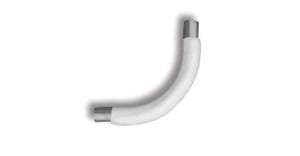Here is why you should start thinking about automating your complete line of jug handling for granular product.
September 21, 2020
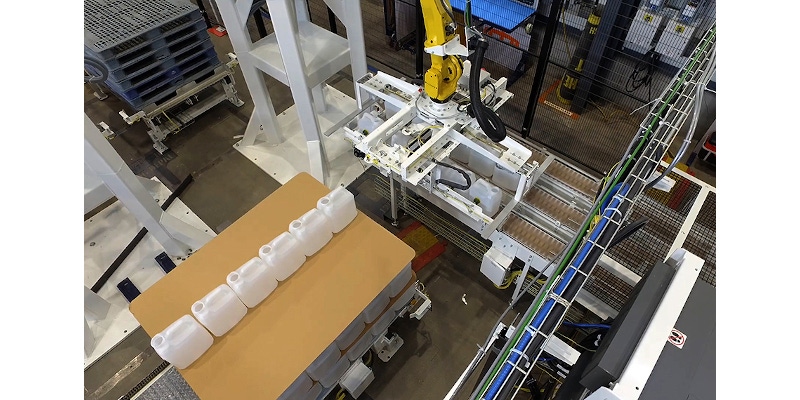
Jean-Robert Boudreau, engineering director, and Sylvain Bonneville, mechanical design manager, Premier Tech Systems and Automation
Plastic jugs are a common container for granular products, such as fertilizers, cat litter, or ice melter. Recycled, recyclable, and easy to handle, they are containers of great value to the consumer, often facilitating the use of the product itself. However, they are not the easiest type of container to manage on a production line due to their shape, bottleneck, and opening.
We believe attention to detail leads to success. It is the reason we are devoting an entire article to this precise topic. At some point in the manufacturing process, no matter what product you handle, it is going to come down to this: Are you being cost-effective? The decision to move forward with automation and robotics should be driven by a desire to boost production rates, improve efficiency, and ultimately, be more profitable.
Here is why you should start thinking about automating your complete line of jug handling for granular product and trust us, we have put it to the test.
1. Automated Depalletizing and End-of-Line Palletizing
Gone is the time when you had to manually depalletize your empty jugs from the pallets. It is not that your personnel is not a right fit for the job; it is simply that production needs will eventually surpass existing capabilities. You can certainly make use of mechanical equipment to assist your workforce. However, providing for maintenance on such equipment is often problematic and not always an economical option.
An automated and robotic first stage of production can be a game changer. Depending on the speed of your line, one robot can easily handle all the items, from the top sheet to the tie sheet and the empty pallet. It also offers the possibility of depalletizing to another pallet or directly on a conveyor, ready for the next step. Tremendously versatile, your robot can be programmed to handle various sizes of jugs simultaneously, reducing downtime.
You can decide to depalletize your jugs one by one, row by row, or layer by layer. However, ask yourself the question: Are you being cost-efficient? Nowadays, it is possible to depalletize from your exterior rows going inward placing your jugs directly on to one or more conveyors. They can then go straight to the next process, saving you time and effort. With a robotic depalletizing system, you will maximize your operations, and consequently, your ROI and profit.
As in the case with a depalletization system, a robotic palletizer at the end of your production line will help you be more productive and cost-efficient. It can handle one or more units at a time according to pallet configuration and offers quick change-over between sizes. You can also program the robot to change its end-of-arm tooling with the press of a button on your HMI. Quite seriously, how nice is that?
2. Labeling or Sleeving
You have worked far too hard on branding your product for it to arrive on store shelves with a torn label or a crooked sleeve. An automated inspection system after the labeling or sleeving step is a must-have for you to portray the desired brand image to your customers and to keep your marketing team happy.
A good vision system can accomplish many tasks that simplify the inspection process: label inspection, print verification, error identification in packaging, seal integrity inspection, bar code validation, punch hole presence, and many more errors can be detected by a vision system.
In the case of a jug line, the system will examine every jug leaving this stage of production to make sure each jug meets your specific requirements. It can also check if the cap or lid is in position or the jugs are aligned properly so that it will not shut down the process further down the line. Catching a flaw early in the process will help you save product and remain cost-efficient
3. Filling with Granular Product
Automation and robotics can do many great things, but if your granular product is not cooperating, it will not help with cost-efficiency. Everybody loves a good free-flowing granular product, but it is not always as easy as it seems, especially when you must fill a container with a small opening at high-speed. A new technology capable of doing so was recently developed to alleviate the jamming issue when bagging a granular product.
The first question that needed to be addressed was: How do you fill a plastic jug with a small opening with heterogenous granular product at high-speed without it jamming? Berveloo’s law was applied and tests with various products needed to be run. A way had to be found to obtain a filling jet small enough to pass through the neck of the container but fast enough to meet the speeds requested by the customer. It was crucial that this spray of product be consistent and repeatable to avoid any potential blockage at the neck of the jug. It was also crucial to consider the evacuation of air from the container during filling in order to avoid clogging and to minimize the emission of dust. With a test bench, Premier Tech was able to develop-test-validate a filling method that met these criteria. Testing has taken place at Premier Tech and at a customer production facility to confirm results. The applications team was able to calculate the flow rate and the shape of the product flow according to system parameters, in order to optimize design.

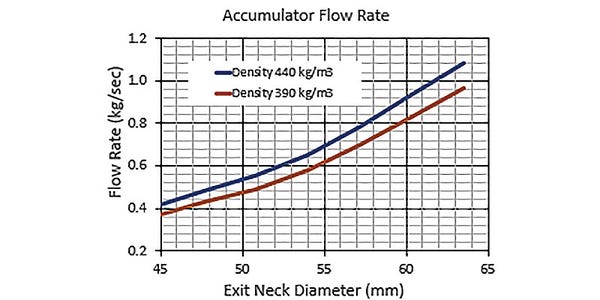
The second question was: How to quickly fill the jug to the brim and ensure that the product spreads evenly inside? Premier Tech had to quickly optimize the distribution and densification of the granular product in the container so the jug did not overflow during filling. The conventional densification methods used for other types of products commonly handled (compost, mulch, powder, etc.) have not proved to be effective with an incompressible granular type product because of the dilatancy phenomenon which is characteristic of granular products. The various tests helped develop a new method to quickly and efficiently optimize the distribution of product in the container during filling.
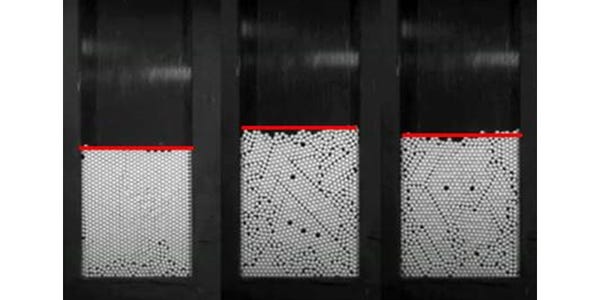
This new technology is scalable to the needs of your production. A peak of 100 jugs per minute has been reached during testing, and the equipment can easily run 72 jugs per minute during continuous operation.

Jugs are most commonly filled by volume. However, it is possible to fill the granules in to your plastic jugs by weight, just like any powdery products. This method of weighing your granules greatly increases the precision of the filling and decreases the loss of product. No matter the density of your product, each jug will have the same amount of product, a considerable gain for your customers.
4. Case Packing
Robotic case packing equipment gives you control over your jugs at all times. Extremely reliable and flexible, this equipment offers the possibility of reducing labor costs and increasing productivity. The robotic case packer can handle various products of numerous sizes and packaging types. With the right case packer, changeovers can be an excellent starting point to increase productivity. With equipment that allows you to store packing patterns (recipes) within its settings, changeovers will be completed faster and with less effort. Keep in mind that the minutes spent readjusting the settings of your case packing machine are not dedicated to packing the product.
Furthermore, investing in equipment that protects your product will have a positive impact on your ROI. A product is not profitable if it does not meet the requirements of the industry. Case packers equipped with state-of-the-art vision systems can now identify packaging defaults and reject unfit product If a product is flagged, it will be placed in a separate pile and can be disposed of as required. This prevents you from shipping poor product and limits returns to suppliers.
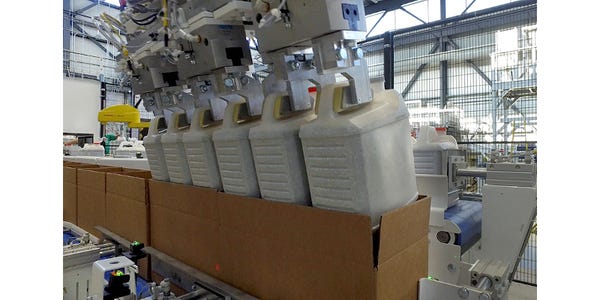
Conclusion

Automating jug line for granular product can and is being done. It is, perhaps, tempting to want to limit the automation process to only one or two pieces of equipment on your jug line, but you should consider automating the entire jug line. If your team is not able to maintain the production rhythm because automated equipment is too fast for them, all your efforts to optimize the line will be for naught.
Jean-Robert Boudreau is engineering director, and Sylvain Bonneville is mechanical design manager, Premier Tech Systems and Automation. For more information, call 866-571-7354 or visit www.ptsystemsautomation.com.
You May Also Like


